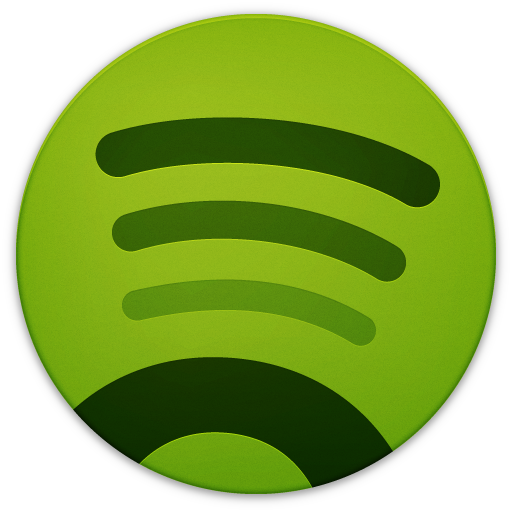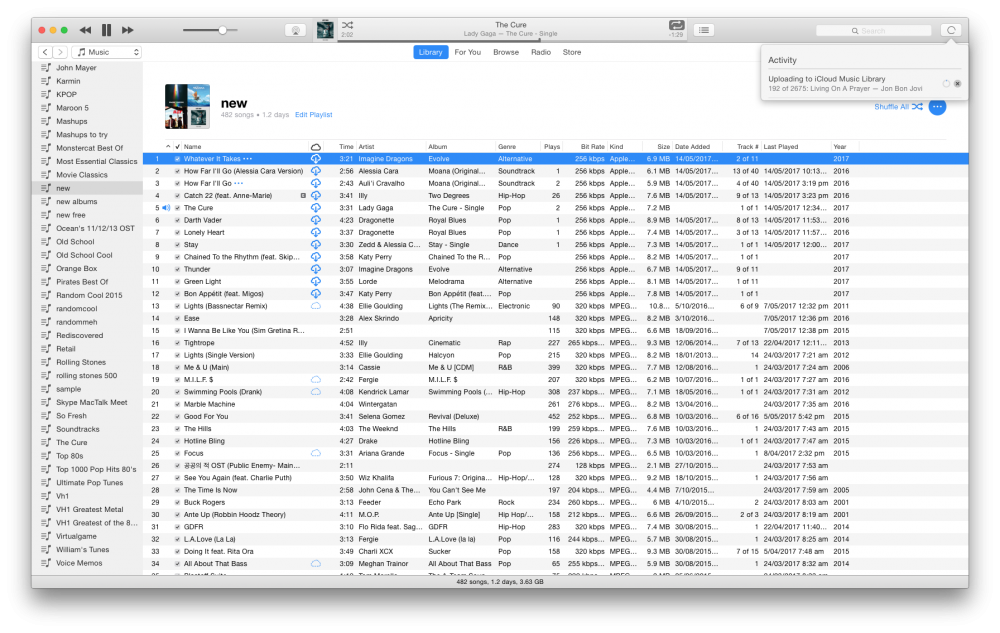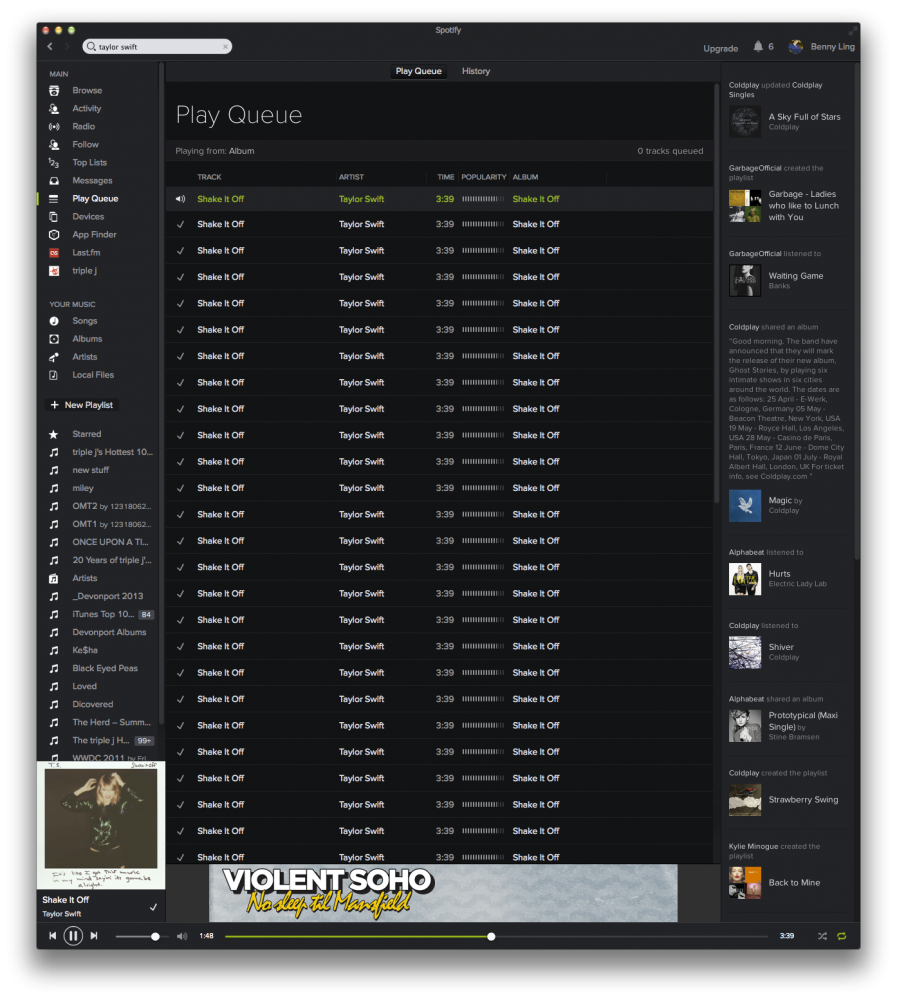
Spotify launched in Australia around a month ago, during which I was able to give it a red hot go. I wrote on MacTalk about my experience with the all-singing, all-dancing streaming music service:
On the face of it, Spotify is brilliant. Who doesn’t want a music collection the size of the iTunes Music Store for free? All the big names are on-board: Universal Music Group, EMI, Sony, Warner, and so on. Spotify means that anytime you want to listen to a track — be it something that you’ve just Shazam’d or something you heard on the radio a few days ago, you can open up Spotify, search for your track or artist of choice, and listen to their music, completely free of charge.
[…]
When I first started out, I wasn’t so sure about Spotify, either as an iTunes replacement or as a standalone music ecosystem. I had my doubts about how Spotify could work for me, especially with such a heavy emphasis on the social and music discovery (and it’s not just because I have what some would call an extremely varied music taste, either). The fact that Spotify prioritises the social aspects of music over some of the intelligence of iTunes should give you some idea as to whether Spotify will work for you. Maybe the world doesn’t need to know you love listening Carly Rae Jepsen as much as you do, (which is exactly why there’s a Private Session feature). You can share tracks, artists, albums, or playlists to pretty much anywhere you can think of. There are still things that irk me a bit about the service, such as the fact the range of metadata is paltry, no, basically non-existent, in comparison to iTunes. You don’t get play counts in Spotify, Last Played info, number of skips, or any of that kind of information. It’s basically just track name, artist, time, and album. That’s it.
But you know what? Not having all of that metadata is strangely liberating, too. It means I don’t have to worry about meticulously keeping my library organised, or worry about album art, because Spotify does all of that for me. I get that Spotify isn’t for everyone — if you’re into very specific music genres or particularly obscure stuff (you hipster, you), maybe Spotify isn’t exactly what you’re looking for in a streaming music service. But hey, that’s what the 30-day trial is for, right?
At the end of the day, I’m not sure whether I’ll continue with Spotify or not after my trial is up. It’s a great service, and there’s a lot to love. Being able to look up and play almost every artist I can think of is extremely, extremely cool; it innately satisfies the desire for instant gratification everyone seems to have these days, and perhaps for that reason alone, means that Spotify will be hugely successful. On the other hand, I miss my metadata and my smart playlists terribly. Having none of that info in Spotify is a pretty big blow to how I’ve been listening to music in the past.
Earlier this week, I cancelled my Spotify subscription. As it turns out, I did miss that kind of metadata more than I might have originally let on. The thing is, I rely on play counts to tell me how much I “like” certain music. Last played information, combined with play counts, tells me how long it’s been since I’ve listened to heavily-played tracks in my library, like Call Me Maybe. I’m convinced that Smart Playlists are the best thing since sliced bread, and losing them in Spotify was too much of a compromise, seemingly for the advantage of music availability and discoverability.
Which is kind of a shame, because there’s lots to love about Spotify Premium. Having the biggest music library accessible wherever you have a data connection is nothing short of amazing, and it comes in ridiculously handy forms: a few friends wanted to listen to a song, and instead of looking it up on YouTube, I simply opened up Spotify, put in the artist name, and there it was — because if nothing else, isn’t technology supposed to make this kind of stuff more accessible to people? Isn’t technology like Spotify meant to lead to greater enjoyment of the things you love the most, i.e. music?
I liked how Spotify because it scrobbled to Last.fm on mobile. I liked how having Spotify on my phone meant I didn’t have to carry around all the music I wanted to listen to. I liked (in part) how Spotify was all about the social — sharing music to others, listening and subscribing to playlists others had made, and even all the discovery features to help you to discover new music. In the end though, paying $12 a month for those privileges didn’t seem worth it to me, especially as I started listening to my own music within Spotify towards the end of my subscription. I mean, doesn’t that kind of defeat the purpose of having the largest music library, literally at your fingertips?
Thankfully, there’s good news. The difference between Spotify and Rdio is that Spotify has a free tier, too: for exactly nothing, you can use Spotify as a preview of whether you’ll like a new album by an artist, or if you’re just looking to play a song that you don’t own and don’t want to go track down. You don’t get access to the mobile version of Spotify on the free version nor any of the ofline features, but that’s not a big deal when you’re listening to local files you own, anyway. Plus, I don’t mind syncing music to my device even though it takes up precious megabytes. All this means that Spotify on the desktop still manages to satisfy that “instant gratification” drive I have when it comes to music — I can still listen to any song I want to, just with a short ad interspersed between tracks.
In fact, just the other day I opened Spotify to listen to a Pink song I had heard before but didn’t own — after playing that a few times in Spotify, I acquired a copy and now it sits on some 68 plays in my iTunes library.
If you haven’t given Spotify a go yet, you should. It’s a good service with many neat features — it’s just that for the way I personally listen to music (i.e. going for the overplay with one, two, or a whole album at a time and swapping between artists and albums I love), Spotify and Me just weren’t meant to be.
And I think I’m okay with that.

